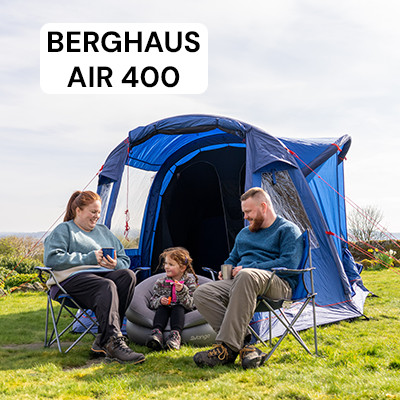

Choosing a compass | Tiso Blog
Supported by Tiso ambassador, Nigel Williams, has participated in 6 Himalayan climbing expeditions including 2 to Everest in the 1980s, and other expeditions from Alaska to South Georgia, Morocco, Turkey and multiple trips to Greenland including a crossing of the ice cap following in Nansen’s footsteps in 2008.
Nigel has had a long career in the outdoors starting in the military then with Fife Council and later Sportscotland as Head of Training at the National Centre, Glenmore Lodge for 20 years. He has been involved with Mountain Training awards and early development of the mountain biking awards. Now a freelance outdoor instructor, he is a director of the National Navigation Award Scheme and author of the book Teaching Navigation.

Price, quality and matching it to your chosen environment
A compass can literally be a life saver and should be treated as a valued scientific instrument. There is wide range available so what differentiates them apart from cost?
Prices and quality vary considerably from around £10 to £80. A higher cost reflects a more accurate, steady and faster settling magnetic needle. When walking in the mountains possibly in bad weather or winter on a bearing across country then a steadier needle is required. If following paths in the countryside is your usual recreation and the compass is just for occasional orientation of the map at a path junction then the cheaper end will suffice.
The qualities of a compass are determined by the quantity or purity and strength of magnesium in the needle, the exact balance of the needle on its pin and the surface area of the needle which affects the friction with the liquid in the capsule. On a standard compass the white (south) end of the needle is about 1mm longer than the red (north) end. This is because the north end wants to dip down to the ground, the extra length counter balances that and allows the needle to float more smoothly.
Accuracy
The steadiest compasses have what appears to be a very broad needle. In fact it is part of a plastic disk and clearly cannot be magnetic however the additional surface area creates more friction and therefore a steadier needle. The magnetism comes from a small magnetic block under the centre of the disk and this sits on a pin which is off set to counter the downward dip of the north end of the block.
Compass capsules are filled with white spirit which freezes around minus 25 degrees. Manufacturers generally rate their compasses as being accurate to within 2.5 degrees. Given that markings on the dial are in 2 degree increments, adjusting for 1 degree magnetic variation in the UK at present is probably a waste of time.

Compass markings
Occasionally one sees compasses with 0 to 64 on the dial, these are Mils (it is the measurement of a metre at a distance of 1000m) and used by the military. There are 6,400 mils to 360 degrees, roughly 17 mils to the degree so clearly a very much more sophisticated and expensive compass is really needed to use that scale effectively. However it is not unusual to find mils on standard looking compass on sale next degree compasses, so check dial numbers before purchasing.
Luminous paint on the needle, the capsule and base plate direction of travel arrow enables alignment of the needle to the N on the dial and helps maintain an accurate bearing at night but adds to the cost.
Markings are in black or red, my own preference is black which seems to show better against contour lines and at night.
A few high end devices come with what looks like an extra floating needle which enables the compass on its side to be used as a clinometer enabling a slope angle measurement to be read off on the compass dial. Useful for assessing avalanche risk in winter.

Some compasses have a lid and mirror for sighting and are often sold as being helpful when lost. In poor visibility, which of course is usually when one is more likely to be lost there is probably little difference in accuracy to a normal compass. They do offer protection to the capsule, but can fill with snow in poor winter conditions and a lack of a magnifying glass and a limited “romer” (map measuring scales) on a short base plate can be frustrating.
The better compasses tend to have a long base plate for accurate aiming when taking bearings across country, a more comprehensive romer and a magnifying glass. They often have easier to grip capsules for operating with gloves or mittens on. A standard romer usually incorporates centimetres a 1:50,000 and 1:25,000 scales. Currently Silva seem to have the only compass with the 1:40,000 scale on the standard Mark 4 Expedition compass which works for Harvey maps and most Mountain Marathon maps.
A good magnifying glass is invaluable for minor detail. Bits of contour line and footpath can be seen between letters and words on the map helping to make sense of what is on the ground.
Small rubber studs under the base plate help stop the compass slipping on the map. It can also help reduce the friction of the underside of the compass capsule against the map case when it is being rotated.
Lastly, compasses come with a cord which should be tied with a small loop at each end, one threaded through the compass attachment point and the other end attached somewhere around waist height enabling it to be held at arms length for accurate aiming, a belt loop or pocket zipper for instance. Hanging it around the neck really should be avoided, it is not a natural place to hold a map and compass under your chin. Avoid attaching it to the rucsac and putting it in a pocket. I watched someone attempt to throw their rucsac across a small river in order to jump the gap more easily, except it didn’t reach the other side. As the cord reached it’s maximum length with the compass firmly in their pocket, horizontal flight instantly came under the influence of gravity and toppled the owner into the water after it!
The bottom line is that the more you pay for a compass the better and steadier the needle, the longer the base plate which enhances accuracy, and generally the more versatile the compass.
Keep it away from anything with a magnet in it such as your mobile phone. Consider replacing it every 5 years or so.

Share your adventures with #mytiso!
Instagram




